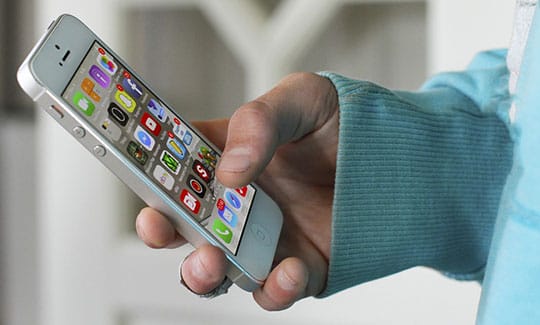Searches from Mobile have overtaken those done by desktop, and Google, the world’s biggest search engine, acknowledged this fact and introduced the highly plausible Mobile first Indexing system. Google catalogs vast amounts of information on the World Wide Web and then prepares a ranking formulation for different search queries and keywords. This is called indexing. Previously, this was done with Google viewing each web page or information as a desktop user. But now it sees them through the lens of a mobile user. Nothing on the mobile platform would benefit from it more than apps.
Apps are one of the most preferred options for users when it comes to mobile, accumulating more than 268 billion downloads by 2017, as they provide a higher degree of micro-interactions, personalization, and navigability than websites. But previously, they were just restricted to app stores, but now Google allows you to index your app and lets it appear on the search engine rankings, which would considerably boost the amount of apps people interact with.
This is a tantalizing opportunity for every business out there to augment and grow its business by providing an app to go with its website. But for your apps to either get discovered on the SERPs or more installs, you would need to have a great User Experience (UX) more than anything else. Users, as well as Google rankings, penalize your app success if you don’t have the greatest of UX. Here are 3 powerful ways to improve your App UX and optimize for the mobile first index:

Recommended reading: Top iOS Development Technology Trends to Rule in 2017.
1) Make for a great onboarding experience:
 First impressions are always valuable, but many app developers and designers feel confused on how a great first impression is to be made when it comes down to applications. For e.g. some apps have immensely detailed sign-up screens which often ask for unnecessary data that could have been done with easily. These kinds of lengthy processes, just when a user is starting to experience the new app, are a huge turn off and may lead to high rate of app abandonment.
First impressions are always valuable, but many app developers and designers feel confused on how a great first impression is to be made when it comes down to applications. For e.g. some apps have immensely detailed sign-up screens which often ask for unnecessary data that could have been done with easily. These kinds of lengthy processes, just when a user is starting to experience the new app, are a huge turn off and may lead to high rate of app abandonment.
The screen of a mobile is definitely smaller. Even the smallest of additions can take up a significant amount of space. So choose your options wisely, making it easier for the user to navigate the app at the start. Keep it minimal and only address important information. But that too in a seamless manner. For e.g. the app requires the person’s email address after which there is a verification process. Make sure that the transition from the app to the person’s email inbox and back to the app is smooth. Otherwise, the user might leave the app never to return again. Concentrate only on creating value and demonstrating the great functionality of your app at the first experience, while keeping other tasks for later.
2) Focus on Swipes not clicks:
 A colossal part of making the UX of any app depends critically on how well the app is designed to adapt to the difference in behavior when it comes to mobile. Yes, we all want users to go deep into the app and engage with its different functionalities. But how they get there is what will determine how far they go. On desktops, there are visible cues. For example, if you mouse-over a link, it morphs into a hand, indicating that there is something to click here. But on the mobile platform and in apps, there is no cursor to guide them. They have only their finger. So providing them with cues and not just assuming that they will understand that clicking on a certain place will open up a new avenue within the app for them.
A colossal part of making the UX of any app depends critically on how well the app is designed to adapt to the difference in behavior when it comes to mobile. Yes, we all want users to go deep into the app and engage with its different functionalities. But how they get there is what will determine how far they go. On desktops, there are visible cues. For example, if you mouse-over a link, it morphs into a hand, indicating that there is something to click here. But on the mobile platform and in apps, there is no cursor to guide them. They have only their finger. So providing them with cues and not just assuming that they will understand that clicking on a certain place will open up a new avenue within the app for them.

It’s not just about the clicks; it’s about the swipes, pinches, and twitches that make the mobile platform so endearing to people the world over. Otherwise, what difference does it make that you are using a desktop or a mobile? Finger gestures are optimized as navigational tools within apps. This not only allows for greater functionality and increased navigability; they also serve to make the app feel at one with the user.
You may also like: Mistakes you Should Avoid in Mobile App Design.
3) Do away with anything that might annoy the user:
 This is a sweeping category but putting each one of the bad UX choices under the banner of “Annoying” might be the perfect way to describe what actually should be left out. The first instance when your app becomes a nuisance to the user is also the first step towards abandonment altogether. There are a lot of things that a user can get annoyed with. But here we restrict them to the three biggest turn-offs when it comes to apps:
This is a sweeping category but putting each one of the bad UX choices under the banner of “Annoying” might be the perfect way to describe what actually should be left out. The first instance when your app becomes a nuisance to the user is also the first step towards abandonment altogether. There are a lot of things that a user can get annoyed with. But here we restrict them to the three biggest turn-offs when it comes to apps:
- Firstly, Stop with the irritating notifications! Phones are constantly updating the user about things related to a certain app can be annoying to the hilt. For example, like how the eCommerce app on your phone just got 10 new pairs of ladies heels. Or that your game now has 4 extra characters that the user can buy. Notifications are part of the holistic experience about apps. Making sure that the user has discretion overturning them off or stop seeing them for a while is highly important to augment the app UX.
- Secondly, make the search option, your best option! The user would only like your app if it can access something within it that it presumably likes. For that to happen, the search options need to as great as possible. Meaningless search returns are highly annoying to the user. No one is going to go through each of the entries individually. The search should be smart and powered by relevant and customizable categories that improve the results. It should give the user what it wants.
- Thirdly, make an extra effort on the App Icon. While every other thing might be great about your app, the App Icon is the first thing that your user will see when it is choosing which app to open amongst a plethora of other apps installed on its mobile. It’s the first hook and the first place where you win the competition for user attention with other apps. So you need to make it count. For websites and brands, we strive to make the best logos. But scant attention goes into making the app icon great. App development companies need to realize and understand the importance of App icons as important facets of developing the perfect App UX.

Final Words
 Users are what power your success or bring your downfall when it comes to putting forward products and in this new digital age, forging together a powerful app UX is becoming increasingly important for not just app development companies but for all brands that plan to build a great app to boost their business efforts. You need to keep the user in mind when developing the app itself. Understand for yourself on how you would actually like the app to function in a way that it makes your user experience highly wonderful and immensely optimized.
Users are what power your success or bring your downfall when it comes to putting forward products and in this new digital age, forging together a powerful app UX is becoming increasingly important for not just app development companies but for all brands that plan to build a great app to boost their business efforts. You need to keep the user in mind when developing the app itself. Understand for yourself on how you would actually like the app to function in a way that it makes your user experience highly wonderful and immensely optimized.
This article is writen by Henry Kingston. He is a passionate blogger who loves to write on everything that's trending. He is a complete tech geek and when he isn't writing he is busy traveling with his family. Henry has joined hands with various authoritative blogs and is currently associated with PNC Logos, a custom logo design company.






